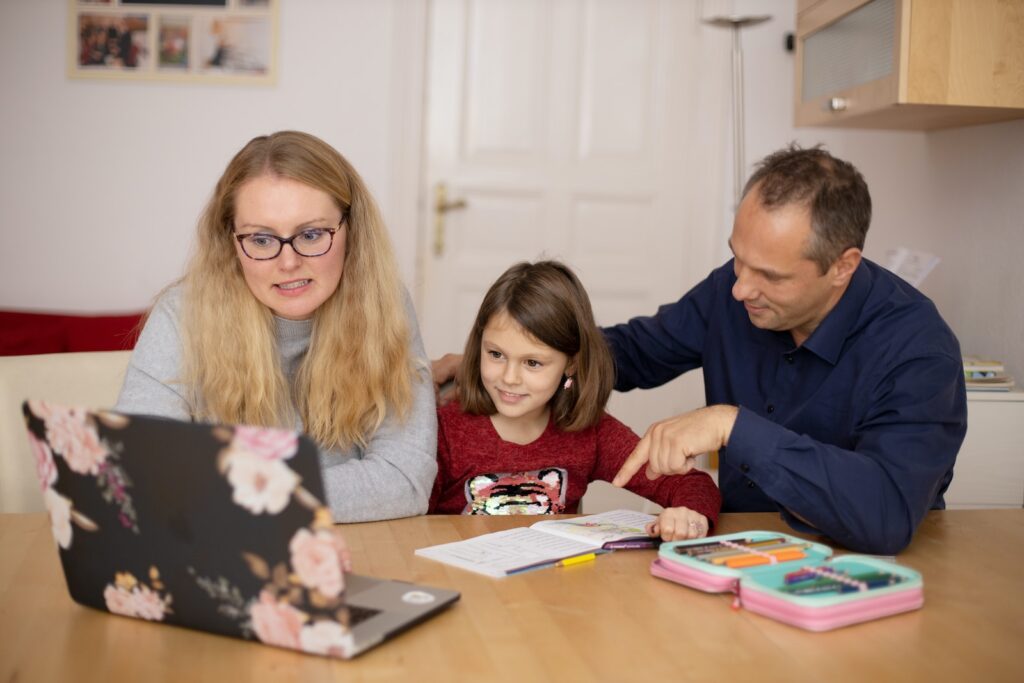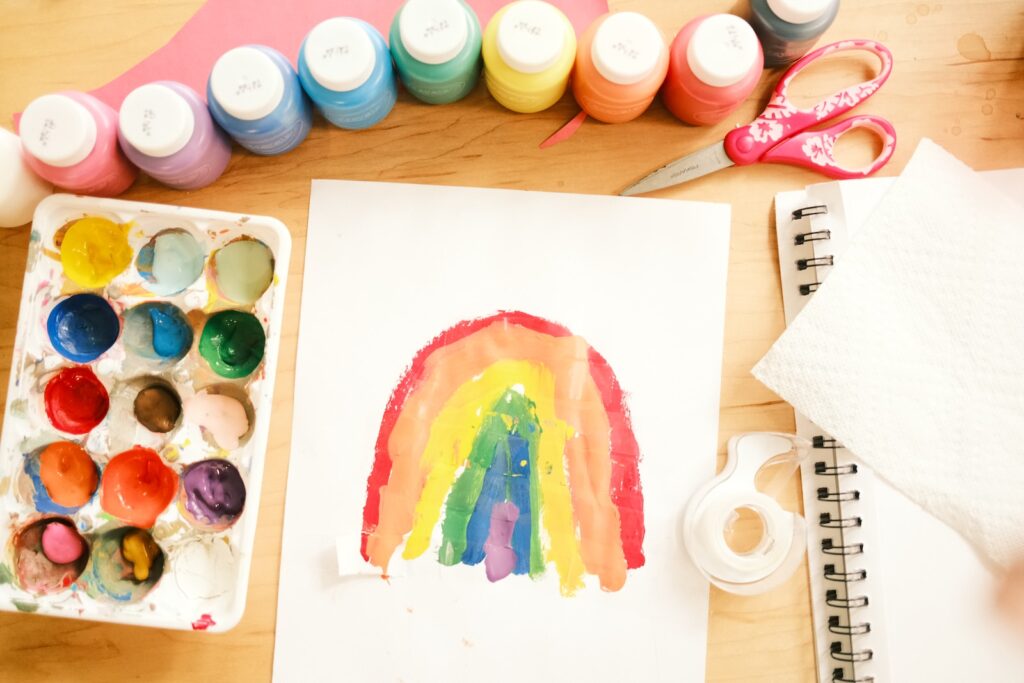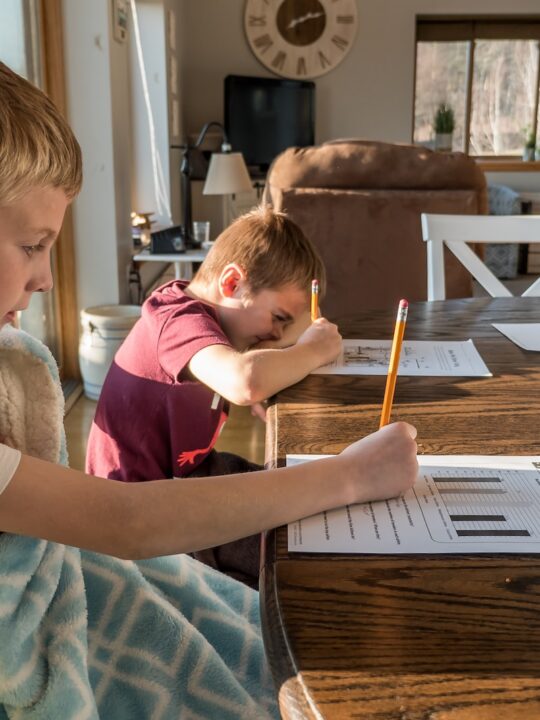10 Essential Tips for Effective Homeschooling
This blog post will explore ten essential tips to help parents with effective homeschooling. It will discuss the importance of providing an individualized learning environment, creating a realistic schedule, finding the right resources, and setting up a valuable learning space. It will also examine the importance of encouraging self-motivation, providing ample breaks, and making learning fun. Finally, the post will offer real-world advice to help make homeschooling an enjoyable and successful experience.
Have you decided to look into Homeschooling? You may have made the decision and are ready to dive in! Or you are already deep in your homeschooling journey, looking for ways to fine-tune your day-to-day wherever you are on your journey; welcome! I am so glad you are here.
I am a homeschooling mom of four children. We have been on our journey for seven years, and along the way, I have learned so much about myself, my children, and life in general. Homeschooling is not for the faint of heart. Be prepared to strip yourself down to your very core and learn more about yourself than you thought possible.
There are many ways to create an effective homeschooling space for your child. It is important to remember no two families are the same! Every child learns in a different way. What may work for one child may not work for the next. The best thing you can do for your child and yourself is to get to know their unique learning styles.
This post will explore different ways to create an effective homeschool space. Remember, this is going to look different from family to family. So, take the tips in this post that works for you and toss the rest. You are the expert of your own family and child!

Tips For Effective Homeschooling
Below, we will discuss my top ten tips for effective homeschooling. Remember, these are simple tips that I have learned along the way. They hopefully will help you create an effective homeschooling environment, but if not, do not be afraid to throw out the advice that doesn’t work for you. There are many excellent benefits of homeschooling. One of the most incredible benefits is figuring out what works for your family. The best thing you can do is become a student of your family and children! Study their learning styles, create a community, and remember it’s okay to change if something isn’t working!
Don’t be Afraid to DeSchool
Have you ever heard of the term deschooling? Deschooling means taking a break from any kind of schooling and changing your mindset about education. When your child or even you have been through the public school system, we are trained to think that education needs to look a certain way. The truth is education is not linear for anyone. If you pull your child out of public school, the best place to start is with deschooling. Take some time and explore what education can look like in your home. This can be exploring your child’s interests, going on nature walks together, field trips, reading good books, playing, enjoying fun crafts and activities, and so much more! Deschooling encourages breaking away from the public school mindset and looking deeply at how children learn. Children learn in many different ways, not just behind a desk with a piece of paper.
Only one of my children has been in public school for a year. I did not have to deschool them specifically because my children only know homeschooling. The deschooling I have done has been specifically for myself. I have had to retrain my brain on what education looks like when it’s not in the public school system because I went through it. Deschooling has been so freeing for my mindset!
Change Your Mindset
This goes along with de-schooling. When you choose to homeschool, you may have to change your mindset. Homeschooling isn’t supposed to look like school at home. However, if that works for you and your family, go for it! This way of education only works for some, though. So, to have an effective homeschooling environment, you must start changing your mindset. You can do this with research, talking to other homeschool families, visiting homeschool activities in your community, and simply remaining open-minded to what education can look like!
Learn Your Child’s Learning Style
Every single child learns differently. Some are visual learners. They can look at a piece of paper and memorize the words, and now they know how to read. Other children are kinesthetic learners and learn through doing and hands-on activities. Study your child, and learn what lights them up when learning and how they retain information the most. Then lean into that style of learning. Do not try to change your child’s learning style; no good will come from it. Instead, you will both become frustrated.
Early in our homeschooling journey with my first child, I became frustrated because she was not learning how to read as fast as I was told she should be. Doesn’t every child learn to read when they are 5 or 6? I pushed too hard to make her learn to read how I thought she should. The only thing that happened was frustration. She started to hate learning, and I started to hate teaching. This stalled her natural learning style, and she began to doubt her learning ability. I regret pushing her hard and sending the message that something was wrong if my child didn’t learn to read at 5 or 6. I stepped back and allowed her natural learning process to take over. Now she reads and enjoys it!
Trust your child with their education style. If you are wondering what type of learner your child is, here is a great online resource!

Don’t Try to Recreate School at Home
Sometimes we can trip ourselves up as new homeschool parents because we try to recreate school at home. Don’t do it unless this is the best way your child learns! It will only frustrate you and your child. Feel free to go with the natural routine rhythm with your family. It doesn’t have to look like 8-3 at a desk. You can do school on the living room floor, outside, at a desk, or upside down on a couch. How does your child learn best? You can do your schoolwork after dinner, before lunch, on the weekends, or whenever it fits your family’s schedules. Again, it doesn’t have to look like school at home. That’s the beauty of homeschooling!
Look for Homeschooling Resources but Don’t Tie Yourself to One
Homeschool resources are wonderful! I love curriculum more than my children do. So do your research, delve into all the resources available if you want, ask for recommendations, go to homeschool conventions, and light up at the Amazon driver bringing your new homeschool resources to your front step. But don’t tie yourself to one specific curriculum. If this resource is not working for your child, feel free to change it. Explore your options and tweak them to work for your family.
Often times we get tied up in checking off all the boxes. It took me a long time to take what works from a specific curriculum and toss the rest. We mix and match. Not every child uses the same curriculum. I have one who strictly does online schooling and others who use a variety of curricula for different subjects. Feel free to make your own and supplement it with videos, crafts, hands-on activities, books, and more!
Your Learning Space Doesn’t Have to Look Like a Classroom
I created a classroom for about a year. Then, I learned that my children didn’t ever sit at the beautifully curated desks. Instead, we sprawled out on the floor, couch, outside, or kitchen table. So we nixed the classroom and returned to doing what worked for us. Your learning space can be wherever you want and look however you want. It can be a beautifully decorated classroom with desks and posters and stickers, and rows of bookshelves. Or it can be rolling carts, your kitchen table, or the outside deck. Your learning space can look however you want it to. Lean into your child’s natural rhythms, and don’t try to force something that isn’t working.
Create Your Routine Based on What Works For Your Family
What is your family’s natural routine? First, determine what that looks like, then create a routine based on what works for your family. The thriving truly happens when your children have a routine that works for them.
Practice Self-Motivation
Practicing and teaching self-motivation will help your child learn to be self-directed. Motivation can sometimes lack for everyone, even homeschool parents. When we are stuck in the mundane, it can be good for us to get out and jumpstart our learning with a change of scenery. Join a co-op, go on a field trip, take a trip to the library, or take a class; there are many options. Use those activities to practice self-motivation. I always tell my children that sometimes we don’t feel like doing something, but that doesn’t mean we don’t. Sometimes, we have to do what we don’t want to do. When your child sees you practicing self-motivation, they will begin implementing it in their own lives.
Here is an excellent post about beating procrastination as a mom.
Remember the Fun Things!
My kids live for fun activities! Checking off the main topics and forgetting the fun things can be easy. The fun supplements engage our children in their educational experience and make fun family memories. Some fun activities to implement into your homeschool day are:
- Baking something
- Learn to cook a new recipe
- Watch an educational video
- Do a fun, hands-on craft
- Create an art table
- Go for a nature walk
- Go to the park
- Join a co-op
- Take an art class
- Do a unit study
- Volunteer
- Do poetry tea time
These are just a few of the fun activities you can do to bring excitement back into your homeschool.

Take Brain Breaks for Yourself and Your Child
We all need breaks. Feel free to take a break during the school day or even during the school year. Look into your state’s homeschool laws, and plan the school days, but don’t be afraid to take vacations and breaks. The days can be extended into the school year if you need them to be. Children need breaks to be fully ready to learn. Sitting at a desk for four or five hours straight can cause children to be restless, and you too! So don’t be afraid to say yes to breaks!
One Last Note
These are a few simple ideas that can help you create an effective homeschool. Feel free to lean into your child’s natural learning style and learn what works specifically for your family. Every family will look different. What works for me may not work for you. However, the beauty of homeschooling is being able to customize your child’s education! So, don’t be afraid to do just that!
If you are looking for more homeschool reads, take a look at these:
- The Word on Word Games: Do They Really Help Children With Reading?
- Common Myths People Believe About Homeschooling
- How To Read More With Your Kids
- Homeschooling Mistakes Everyone Makes
Hi there, I’m Jenna! I am a devoted mommy and wife. As well as an advocate for children and creating a peaceful atmosphere for those we love. I co-wrote Faith Actually: Living Life After Tragedy with my husband. I have my Bachelor’s Degree in Biblical Studies and currently working toward my Master’s in Positive Psychology. My number one desire is to create a peaceful home life for my family. My second desire is to share with you the tips I learn along the way!


